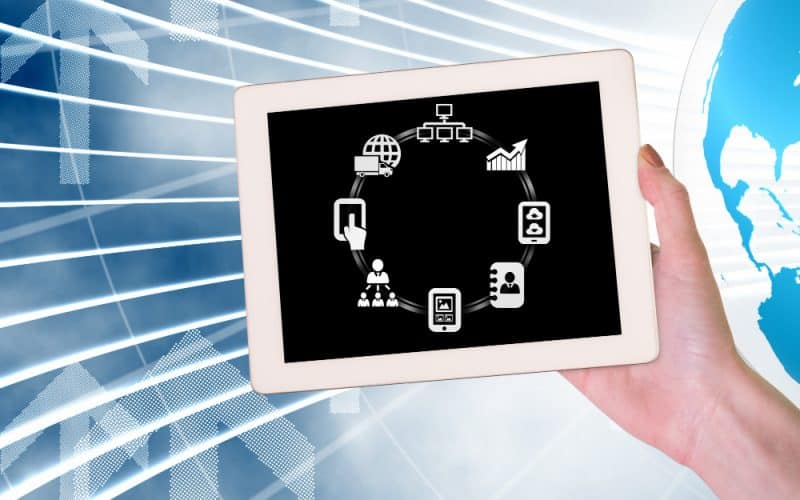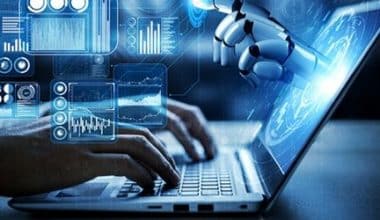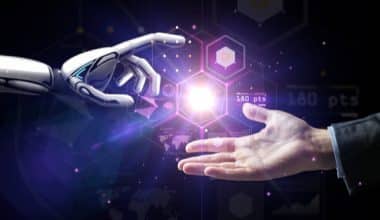Key Takeaways
- Technological advancements are revolutionizing HR practices.
- AI and machine learning are increasing efficiencies in hiring and employee management.
- Data analytics is playing a crucial role in strategic decision-making.
- Automation is streamlining repetitive HR tasks, freeing up time for strategic activities.
- Remote work tools are becoming essential in the modern workplace.
Introduction
As technology evolves, its impact on various business functions becomes more pronounced. One area that has seen significant transformation is Human Resources (HR) management. Traditionally viewed as a back-office function, HR now leverages technology to enhance efficiency, improve employee experiences, and drive strategic decision-making. This article delves into how technological innovations are reshaping HR practices and the benefits they bring to organizations. These programs help professionals stay ahead in the fast-evolving landscape of HR management. Technology integration into HR has paved the way for more dynamic and adaptive HR functions. From recruitment processes that harness the power of AI to employee management systems that rely on data analytics, the HR field is undergoing a revolutionary change. This transformation is limited to large corporations and extends to small and medium-sized enterprises, making HR technology a universal tool for improving business performance.
AI and Machine Learning in HR
The incorporation of Artificial Intelligence (AI) and machine learning into HR functions is not merely a passing fad but a progression. For those interested in advancing their careers, various human resources MBA programs online offer insights into these emerging trends and technologies. These technologies facilitate various HR tasks, from recruitment to employee management. For instance, AI-powered tools can analyze resumes and match candidates to job roles, ensuring a more efficient and fair hiring process. Additionally, AI can help monitor employee engagement and satisfaction by analyzing communication patterns and feedback, providing HR with actionable insights. For example, AI algorithms can scan for keywords and phrases in resumes, enabling hiring managers to quickly identify potential candidates who meet the job requirements, thereby reducing the time and effort involved in the initial screening process.
Moreover, AI-driven chatbots are increasingly used to handle routine HR queries, freeing HR professionals to focus on more complex tasks. These chatbots can answer questions about company policies, benefits, and other HR-related topics, providing 24/7 support to employees. Machine learning models are capable of predicting employee turnover through the analysis of employee behavior patterns and trends, allowing HR teams to take proactive measures in retaining talent.
Data Analytics for Strategic Decisions
Data analytics is pivotal in transforming HR into a strategic partner within organizations. HR professionals can gain insights into workforce trends, employee satisfaction, and productivity levels by analyzing employee data. These insights are invaluable for making informed decisions that align with the company’s goals and improve overall performance. Harvard Business Review emphasizes the importance of utilizing people analytics to transform modern HR procedures through metrics that can forecast employee turnover, detect skill shortages, and enhance talent management approaches. For example, analytics can help determine which employee benefits are most valued by the workforce, allowing companies to tailor their benefits packages to meet employee needs better and attract top talent.
Furthermore, data analytics enables HR professionals to measure training programs’ effectiveness and identify areas for improvement. By tracking key performance indicators (KPIs), HR teams can evaluate various HR initiatives’ return on investment (ROI) and make data-driven adjustments. This strategic approach ensures that HR efforts are aligned with organizational objectives and contribute to the company’s overall success.
Automation Streamlining HR Tasks
Automation is another technological advancement that is making waves in HR management. Automating tasks like payroll processing, benefits administration, and performance reviews allows HR professionals to concentrate on more strategic activities. Automated systems ensure accuracy and efficiency, reducing the likelihood of errors and enhancing overall productivity. With automation, HR departments can also easily track and manage compliance with labor laws and regulations, reducing legal risks for the organization. For instance, automated payroll systems can precisely calculate employee wages, taxes, and deductions, minimizing the risk of payroll errors and ensuring timely payments.
Additionally, automation can streamline the onboarding process for new hires. Digital onboarding platforms can manage paperwork, training schedules, and orientation tasks, providing a seamless experience for new employees. By automating these processes, HR teams can ensure that new hires are integrated into the company quickly and efficiently, allowing them to become productive team members in less time.
Importance of Remote Work Tools
The shift towards remote work has necessitated the adoption of digital tools that facilitate collaboration and communication. HR departments currently depend on software that aids remote work, like video conferencing tools, project management software, and digital communication platforms. These tools help maintain productivity and engagement among remote teams, ensuring business continuity and a positive work environment. For example, platforms like Slack and Zoom have become indispensable for virtual meetings and daily interactions, bridging the gap between remote employees and the office. These tools are equipped with functions like screen sharing and file transfer, facilitating team collaboration and real-time information sharing during projects.
Moreover, remote work tools often have built-in security features that protect sensitive company data. Virtual private networks (VPNs) and encryption technologies ensure that remote work is conducted securely, preventing unauthorized access to company resources. HR teams can also use these tools to monitor employee performance and provide support, ensuring remote employees remain engaged and productive.
Enhancing Employee Engagement with Tech
Technology is also playing a vital role in enhancing employee engagement. Gamification techniques, employee wellness apps, and virtual training programs are examples of how tech can keep employees motivated and connected. Employees who are actively involved in their work are more inclined to be efficient and loyal to the company, resulting in improved business results. Interactive platforms providing immediate feedback and acknowledgment can greatly enhance morale and cultivate a feeling of camaraderie in the workplace, even when working remotely. For example, gamification can reward employees for achieving specific goals or completing training modules, creating a sense of achievement and encouraging continued engagement.
Employee wellness apps can also play a crucial role in promoting work-life balance and overall well-being. These apps offer features such as mindfulness exercises, fitness tracking, and stress management resources, helping employees maintain their physical and mental health. Through encouraging a wellness-focused culture, businesses can decrease absenteeism, enhance employee happiness, and establish a more favorable work atmosphere.
The Future of HR in the Technological Era
The relationship between technology and HR is expected to grow even more vital. New technologies like blockchain, virtual reality, and advanced analytics will keep molding the HR future with secure data management, immersive training, and predictive insights. Companies that adopt these technologies will be more equipped to adjust to evolving workforce trends and attain lasting triumph. Investing in these technologies provides a competitive edge and ensures that HR departments can offer innovative solutions to workforce challenges. For example, blockchain can be utilized to securely save and confirm employee qualifications, simplifying the hiring procedure and lowering the chance of fraud.
Virtual reality (VR) is a new technology that could completely transform HR training programs. VR can provide immersive training experiences that simulate real-world scenarios, allowing employees to practice and refine their skills in a safe and controlled environment. This technology can be particularly beneficial for roles that require hands-on training, such as manufacturing or healthcare, where traditional training methods may be less effective.
Conclusion
In conclusion, technology significantly transforms the HR landscape, offering numerous benefits, from increased efficiencies to better decision-making. By integrating AI, data analytics, automation, and remote work tools, HR professionals can navigate the complexities of the modern workplace more effectively. As these technologies evolve, their impact on HR will further enhance, positioning HR as a crucial strategic function within organizations. It is crucial for HR professionals to remain knowledgeable and flexible in order to navigate the new opportunities and challenges that will arise from the constant evolution of technology.






